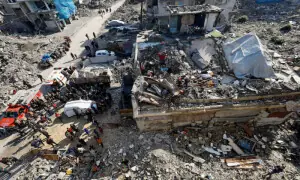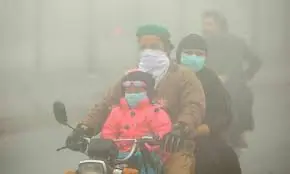KP tourist destinations get early warning system to enhance flood protection
The effects of climate change are being increasingly felt across the world and have major implications for Pakistan in particular. Last year’s floods wreaked havoc across Pakistan, with many parts of Khyber Pakhtunkhwa sustaining major damage.
One of the affected areas was Swat and its tourism spots, mainly Kalam and Paloga, near Ushu Valley.
Former UC Chairman Kalam Malak Fareed Ullah says floods damaged Paloga in 2010 and the area faced widespread devastation in last year’s floods once again.
Paloga has an area of around 2000 kanals, where people mainly earn through agriculture or tourism. Both activities were badly affected by the floods.
Tourism is a prime bread-earning source for the locals as people from all over the country come to Paloga to view the area’s beautiful landscape. As the tourists arrive restaurants and even small shops see a boom in business.
When the floods hit the area, all of those activities were shut down as tourists could no longer access the area, said Malak Fareed Ullah.

United Nations Development Program started the “Glacier Lake Outburst Flooding 2 (GLOF2)” program in Kalam in 2017 after the success of the GLOF1 project.
GLOFs are sudden events that can release millions of cubic meters of water and debris, leading to the loss of lives, property, and livelihoods amongst remote and impoverished mountain communities.

In this program, a protective wall is being built in Paloga and later safe havens will also be created to provide shelter to the locals in case of floods.

Development practitioner Rashid Khan said that the construction of an early warning system is also part of the GLOF2 Project, and will be installed at both high (3000M) and low altitudes.

The early warning system will also have a rain gauge, river level gauge, automatic weather station, and warning post.
In flood situations, the higher altitude system will inform both communities living in lower areas and the Pakistan Meteorological Department (PMD), so local communities can be evacuated to safe havens prior to floods.
After the installation of the early warning system, people will be informed via a bell.
Rashid Khan says the early warning system will be installed in 5 districts of Khyber Pakhtunkhwa:
- in Swat, it will be installed in Utror,
- in Upper Dir, it will be installed in Kumrat,
- in Upper Kohistan, it will be installed in Kandia,
- in Upper Chitral, it will be installed in Reshun, and -in lower Chitral, it will be installed in Arkari
Due to rising temperatures, glaciers in Pakistan’s northern mountain ranges – the Hindu Kush, Himalayas, and Karakorum – are melting rapidly and a total of 3,044 glacial lakes have developed in Gilgit-Baltistan and Khyber Pakhtunkhwa.
Of these, 33 glacial lakes have been assessed to be prone to hazardous GLOF.
The scaling-up of the GLOF risk reduction in Northern Pakistan (GLOF-II) project is a continuation of the four-year ‘Reducing Risks and Vulnerabilities from GLOF in Northern Pakistan’ (GLOF-I) project.
For the latest news, follow us on Twitter @Aaj_Urdu. We are also on Facebook, Instagram and YouTube.


















Comments are closed on this story.